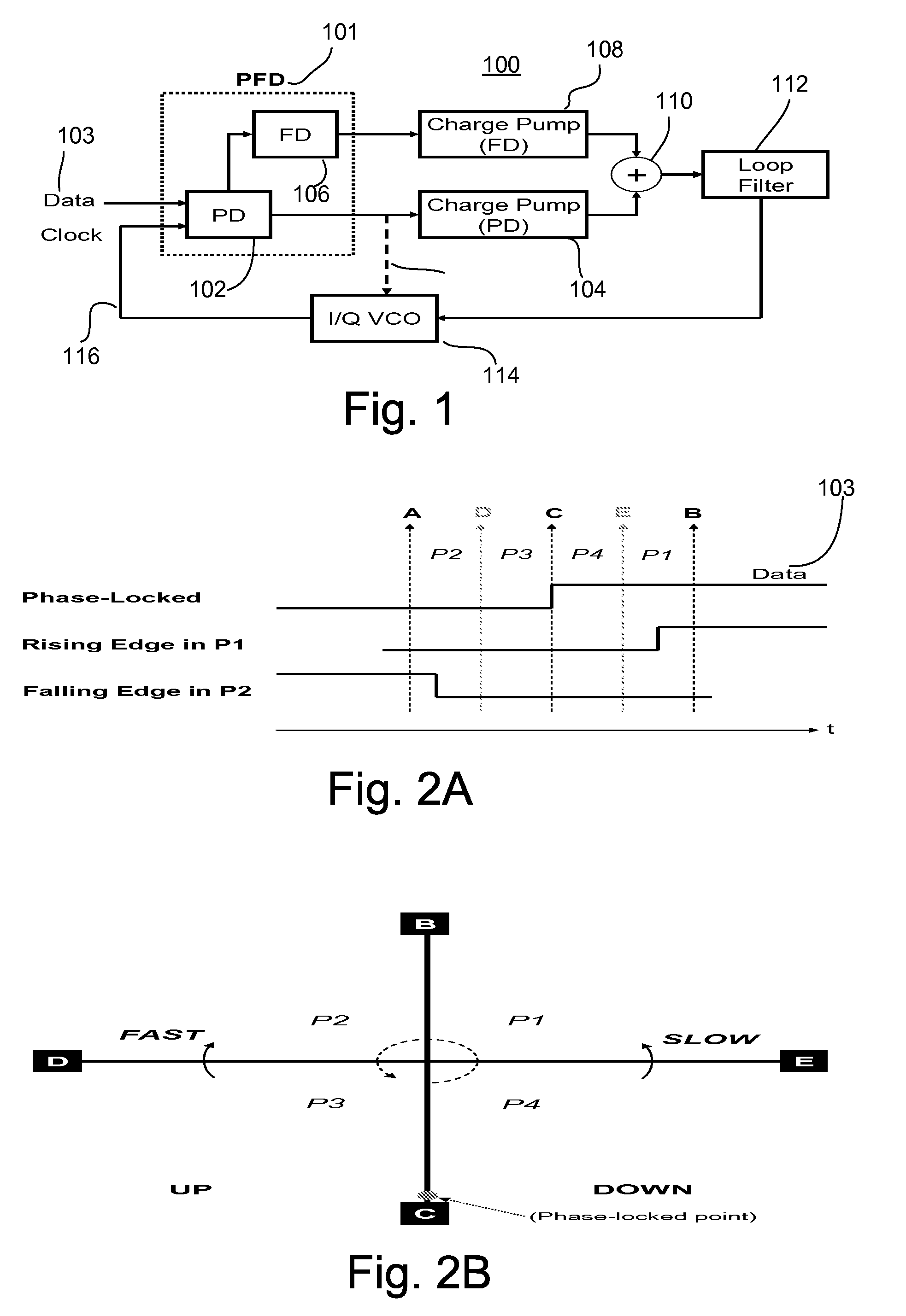Phase/Frequency Detector and Charge Pump Architecture for Referenceless Clock and Data Recovery (CDR) Applications
- Summary
- Abstract
- Description
- Claims
- Application Information
AI Technical Summary
Benefits of technology
Problems solved by technology
Method used
Image
Examples
first embodiment
[0037]Referring now to FIG. 5B, the tri-state FD charge pump 104 comprises a differential pair 520, 522 and current mirrors 531, 537 and 532, 538 to deliver a tail current of 2×ICP-FD. When SPEED is high, transistor 537 is driven to sink a current of 2×ICP-FD, while transistor 538 sinks zero current. The cascaded differential pairs 524, 526 and 533, 534 perform logic AND operation to select the phase region P1 such that the charge pump drains a current of 2×ICP-FD from the X node only when the phasor falls within P1. On the other hand, when SPEED is low, transistor 537 is driven to sink zero current, while transistor 538 sinks a current of 2×ICP-FD. The cascaded differential pairs 528, 530 and 535, 536 perform logic AND operation to select the phase region P2 such that the charge pump drains a current of 2×ICP-FD from the Y node only when the phasor falls within P2.
second embodiment
[0038]Referring now to FIG. 5C, the tri-state FD charge pump 104 comprises a differential pair 552, 554 to draw a current of 2×ICP-FD to starve tail current sources 572 or 574. When SPEED is high, it draws a current of 2×ICP-FD to starve tail current source 574, while drawing none from tail current source 572. The differential pairs 556, 558 and 560, 562 performs logic AND operation to select the phase region P1 such that the charge pump drains a current of 2×ICP-FD from the X node only when the phasor falls within P1. On the contrary, when SPEED is low, tail current source 572 is starved. The cascaded differential pairs 564, 566 and 568, 570 perform logic AND operation to select the phase region P2 such that the charge pump drains a current of 2×ICP-FD from the Y node only when the phasor falls within P2.
[0039]Either FD charge pump from FIGS. 5B or 5C may be adopted in the CDR loop. The FD charge pumps 108 are conditionally active only within either P1 or P2, shown as gray areas in...
PUM
 Login to View More
Login to View More Abstract
Description
Claims
Application Information
 Login to View More
Login to View More - R&D
- Intellectual Property
- Life Sciences
- Materials
- Tech Scout
- Unparalleled Data Quality
- Higher Quality Content
- 60% Fewer Hallucinations
Browse by: Latest US Patents, China's latest patents, Technical Efficacy Thesaurus, Application Domain, Technology Topic, Popular Technical Reports.
© 2025 PatSnap. All rights reserved.Legal|Privacy policy|Modern Slavery Act Transparency Statement|Sitemap|About US| Contact US: help@patsnap.com



